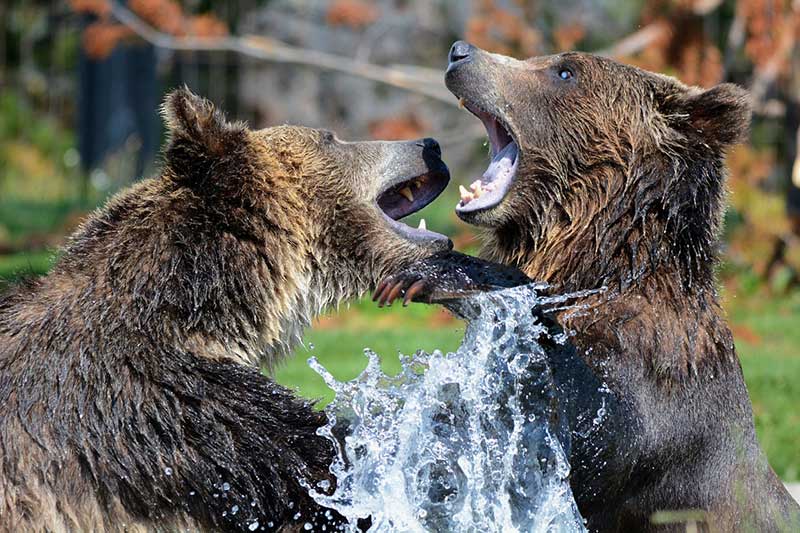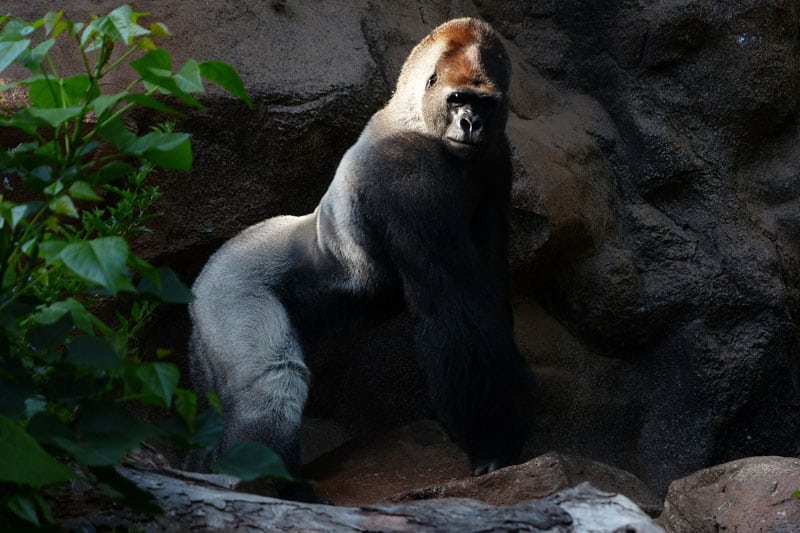Monkey Bathroom Pictures
Animals can be categorized by the foods they eat. They can be divided into three main groups: herbivores, carnivores, and omnivores. The types of food an animal eats are greatly dependent on its habitat and adaptations. In this article we're going to be looking specifically at some examples of omnivores. But before we can can do that, we have to better tell you what an omnivore is.
What Is an omnivore?
Omnivores are animals that eat both meat and vegetation.
Omnivores will hunt and kill their prey or scavenge for food, but will also eat different types of plants, fruit, and vegetables. Humans are an excellent example of an omnivore. We eat meat and plant for survival and proper nutrition. We'll be discussing other omnivores and what makes them an omnivore.
27 examples of omnivores
The following list is of 27, totally random omnivores. Many of them I'm sure you've heard of, others maybe not.
Anyways, let's look at some pictures and learn a little about each of these meat and veggie eating animals!
1. Groundhog

Groundhogs, also known as a whistle pig, woodchuck, or land beavers are omnivores. While they mostly eat plant life, they also enjoy insects and eggs. Groundhogs are known for their extraordinary digging capabilities. Their burrows are very complex, even having a bathroom chamber. They are excellent climbers to help them escape predators.
2. Fennec Fox

They are the world's smallest fox. Fennec foxes live in desert environments and live 10-14 years on average. Fennec Foxes eat fruit, roots, and other plant life, but also will feed on small reptiles, rodents, and eggs, making them omnivores.
3. Black-Backed Jackal

Black-Backed Jackals are part of the canine family native to Africa. These species of Jackal are highly adaptable animals capable of living on many different terrains. Jackals will feed on invertebrates, like spiders and crickets, small mammals, carrion, and reptiles. Jackals are classified as omnivores because they will also feed on fruits and berries.
4. American Black Bear

American Black bears are omnivores, with up to 85% percent of their diet consisting of vegetation. They are exceptional foragers. They will also hunt young deer and eat fish. Black bears don't actually have good eyesight, but their other senses are heightened.
5. Grizzly bear

Grizzly bears, also known as the North American brown bear, are mighty animals. They have sharp claws and the jaw pressure powerful enough to crush a human skull. Grizzlies have the digestive system of a carnivore and are classified as Carnivora but are omnivores, having a diet of less than 30% meat. They feed a lot on vegetation and forage for nuts and fruit.
6. Raccoon

A Raccoon's diet varies greatly depending on their environment. Their diet consists of a wide variety of many different foods, eating plants, vertebrates, and invertebrates.
Raccoons living in urban areas will also rummage through trash for food. Christopher Columbus was the first known person to write about raccoons.
7. Opossum

Opossums are marsupials that originated in South America and later entered North America. Both Opossums and Possums, two different species, are omnivores and scavengers feeding on carrion, insects, small mammals, fruits, vegetables, and grass.
8. Ostrich

Ostriches are enormous birds that walk on two legs, and are usually taller than humans. They can reach speeds of almost 45mph, making them the fastest land bird. Ostriches will eat leftover carnivorous remains, small creatures like lizards and plants, nuts, flowers, and seeds. Ostriches lack teeth, so they ingest pebbles to help digest their food.
9. Bearded Dragons

Bearded Dragons are native to Australia and are opportunistic omnivores feeding on almost anything small enough. These lizards are among the most popular pet reptiles there are because of their social personalities and generally low-maintenance lifestyles. Bearded Dragons, unlike a lot of other species of lizards, can not regrow limbs.
10. Pig

Pigs have gotten a bad rep for being dirty and dumb, but the very opposite is true. Pigs are remarkably smart animals. Domesticated pigs have been trained for many purposes, hunting truffles being one. In the past decade, pigs have started to make their way indoors and not as food! Pigs make wonderful pets. Their diet consists of animals and plants, making them omnivores.
11. Wild Boar

Wild boar, also known as Wild pigs, look much different than their domesticated counterparts. Boar can be found on almost every continent. In the wild, Wild Boar eat a wide range of food: eating carrion, eggs, small rodents, fruits, nuts, roots, and various plant life. Wild boar use their snouts to dig up roots and bulbs.
12. Warthog

Warthogs can be identified by the tusks protruding out of their mouth. They are used to defend themselves against other warthogs or predators. Warthogs eat fruits, berries, and other vegetation. They also eat carrion, insects, and fungi, making them omnivores.
13. Common Snapping Turtle

Common snapping turtles consume both plant and animal matter, making them omnivores. They are also scavengers and commonly found in many U.S. states.
In 2006 the common snapping turtle was declared New York's state reptile.
14. Olive Baboon

Olive baboons live in groups from 15 to 150, each baboon with its own social ranking. Baboons do slightly resemble dogs with their long snouts, and powerful jaws, with very long pointed canines. Baboons are exceptional foragers and opportunistic eaters, eating almost anything they come across. Olive Baboons and humans share 91% similarities in our DNA.
15. Western Gorilla

Gorillas are the largest of the primates. Western Gorillas are social animals living in units called Harems. Western Gorillas eat mostly plants, fruits, bamboo, and bark but will eat invertebrates, making them omnivores. A mature male gorilla (12 years old or older) is often referred to as a silverback.
16. White-fronted Capuchin Monkey

White-fronted Capuchin monkeys are the smallest of the Capuchin species. Capuchins are often the monkeys used in Hollywood movies. Native to South America, these small monkeys spend their day foraging. They eat fruits, eggs, and small animals.
17. Tapanuli Orangutans
Tapanuli Orangutans are native to Asia living in Indonesia. These Orangutans enjoy spending much of their time high up in the trees, eating fruits, sap, insects, caterpillars, and even pinecones. Tapanuli Orangutans are solitary animals, only see together when they have young.
18. Spider Monkey

Spider Monkeys eat fruit, leaves, and flowers but will also eat arachnids, insects, and eggs. They're are native to South America, found in tropical rainforests. Spider Monkeys are hardly ever seen on the ground, spending most of their life in trees.
19. Chipmunk

Siberian chipmunks are native to Asia and Europe. A chipmunk can expand its cheeks up to 3x its head. They use their cheek pouches to store food, to carry it back to their burrow. Chipmunk burrows consist of two parts, a sleeping den and the other is for giving birth.
Siberian chipmunks eat a wide variety of foods. Their diet consists of seeds, grains, fruits, vegetables, fungi, insects, small birds, and reptiles.
20. Sugar Glider

Sugar gliders are marsupials native to Australia. They can glide due to a thin membrane of skin called a patagium. This membrane travels from their wrists to their ankles. Sugar gliders eat a variety of foods; sap, pollen, nectar, insects, arachnids, and other small invertebrates.
21. American hog-nosed skunk

The American hog-nosed skunk is Native to North America and one of the largest species in the world. Skunks are impressive creatures. They are immune to snake venom and can spray predators with bad-smelling musk that comes from their anal glands.
Skunks use their claws to dig for food. They eat insects, fruit, small mammals, birds, and eggs.
22. Long-nosed bandicoot

The long-nosed bandicoot is a species found in Australia. They have a very long nose, which tells them apart from other small mammals. Bandicoots are solitary animals, staying to themselves unless mating. Long-nosed bandicoots are omnivores feeding on insects, vegetation, and invertebrates. After a bandicoot catches its prey, it will knead it into pulp before eating.
23. White-footed Mouse

The white-footed mouse, also known as a wood mouse, is a very timid creature, avoiding humans and danger of any kind as much as possible. This species of mice are omnivores living on a diet of mainly seeds and insects. Mice are clean and accomplished explorers. They are believed to empathize and even show compassion.
24. Brown Rat

Brown rats are a perfect example of a true omnivore, eating almost anything they come across. These rats can be found almost anywhere humans live. They are generally nocturnal animals.
Rats are profoundly intelligent animals and, like mice, show a great deal of compassion. They are able to learn tricks and can even laugh.
25. Eastern fox squirrel

The Fox squirrel is the largest species of tree squirrel residing in North America. Their diet consists of seeds, insects, eggs, birds, and when available dead fish.
Squirrels are agile creatures, their feet can rotate 180 degrees, and they are able to climb down trees headfirst. When Squirrels are confronted with a predator, they attempt to confuse them by running in multiple directions.
26. Red-rumped Agouti

The Red-rumped Agouti live in small groups and are native to South and North America. They eat a varied diet consisting of fruits, seeds, leaves, and insects.
Red-rumped Agouti is monogamous, mating for life. They are one of the only animals that can crack a Brazil nut.
27. De Brazza's monkey

De Brazza's monkeys are large primates native to Africa.
They are arboreal, spending most of their time in trees but can be found on land and in water. This species of monkey eats mainly fruit but can also be found eating insects.
When De Brazza's, feel threatened they will freeze. They will also curl into balls, where only their back is showing and can remain that way for hours till the danger has passed.
Source: https://wildlifeinformer.com/examples-of-omnivores/







Tidak ada komentar:
Posting Komentar